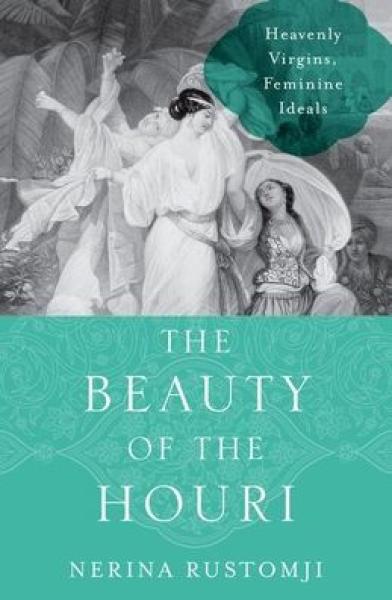Description
The fascination with the houri, the pure female of Islamic paradise, began long before September 11, 2001. Beauty of the Houri: Heavenly Virgins, Feminine Ideals demonstrates how the ambiguous reward of the houri, mentioned in the Qur)qan and developed in Islamic theological writings, has gained a
distinctive place in the cultural eye from the seventeenth to the twenty-first century.
The houri had multiple functions in Islamic texts that ranged from caretaker, to pure companion, to personal entertainment. French, English, and American writers used the houri to critique Islam and Muslim societies, while also adopting the houri as a model of feminine beauty. Unlike earlier texts
that presented different forms of the houri or universalized the houri for all women, writings about the houri after September 11th offer contradictory messages about Islam. In the twenty-first century, the image of the houri has come to symbolize a reward for violence and the possibility of gender
parity.
As a cosmic figure that inspires enduring questions about the promise of paradise and the idealized feminine form, the houri has a singular past and broad potential for future interpretation. The Beauty of the Houri narrates an intellectual history of the houri and offers a contemporary account of
how theological ambiguity has led to different interpretations of this powerfully enduring Islamic concept.
"The fascination with the houri, the pure female of Islamic paradise, began long before September 11, 2001. Beauty of the Houri: Heavenly Virgins, Earthly Jihad, and the Feminine Models of Islam demonstrates how the ambiguous reward of the houri, mentioned in the Qur an and developed in Islamic theological writings, has gained a distinctive place in English and French literature from the seventeenth to the twenty-first century and in digital material in the twenty-first century. The houri had multiple functions in Islamic texts that ranged from caretaker to pure companion to entertainment. French, English, and American writers used the houri to critique Islam and Muslim societies while also adopting the houri as a model of feminine beauty. Unlike earlier texts that presented different forms of the houri or universalized the houri for all women, writings about the houri after September 11th offer contradictory messages about Islam. In the twenty-first century, the image of the houri symbolizes a reward for violence and the possibility of gender parity. As a cosmic figure that inspires enduring questions about the promise of paradise and the idealized feminine form, the houri has a singular past and potential for future interpretation"--
"In the Jesuit Spiritual Exercises, one reflects on the teaching that 'The profane is not divorced from the spiritual.' Rustomji has created a small masterpiece, meticulously researched and beautifully written, which helps us to understand both the spiritual and the profane elements of the Houri."
-- Amir Hussain, Chair and Professor of Theological Studies, Loyola Marymount University, Los Angeles
"In The Beauty of the Houri, a meticulously researched and elegantly written book, Rustomji offers us much more than a survey of houris in the Muslim past. Drawing on sources from the Qur'an and hadith, European poetry, and Islamist recruitment videos to US news items, the author weaves together
analysis of texts with profound theoretical insights into gender constructions, changing eschatological expectations, text criticism, and contemporary US and Muslim politics. Highly recommended." -- Julianne Hammer, Associate Professor of Religious Studies, UNC Chapel Hill
"This vivid, enthralling study offers readers a unique point of entry into a fascinating global history of feminine ideals of beauty, imagined by men and women, for this world and the next. The author traces the fluidity of this image, not just among Muslims, but also as it once impacted European --
and American -- Christians. A rare treat for those intrigued by gender and religion within and beyond the Islamic world." -- Denise A. Spellberg, author of Thomas Jefferson's Qur'an: Islam and the Founders
Product Details
- Oxford University Press, Brand
- Aug 3, 2021 Pub Date:
- 019024934X ISBN-10:
- 9780190249342 ISBN-13:
- 248 Pages




